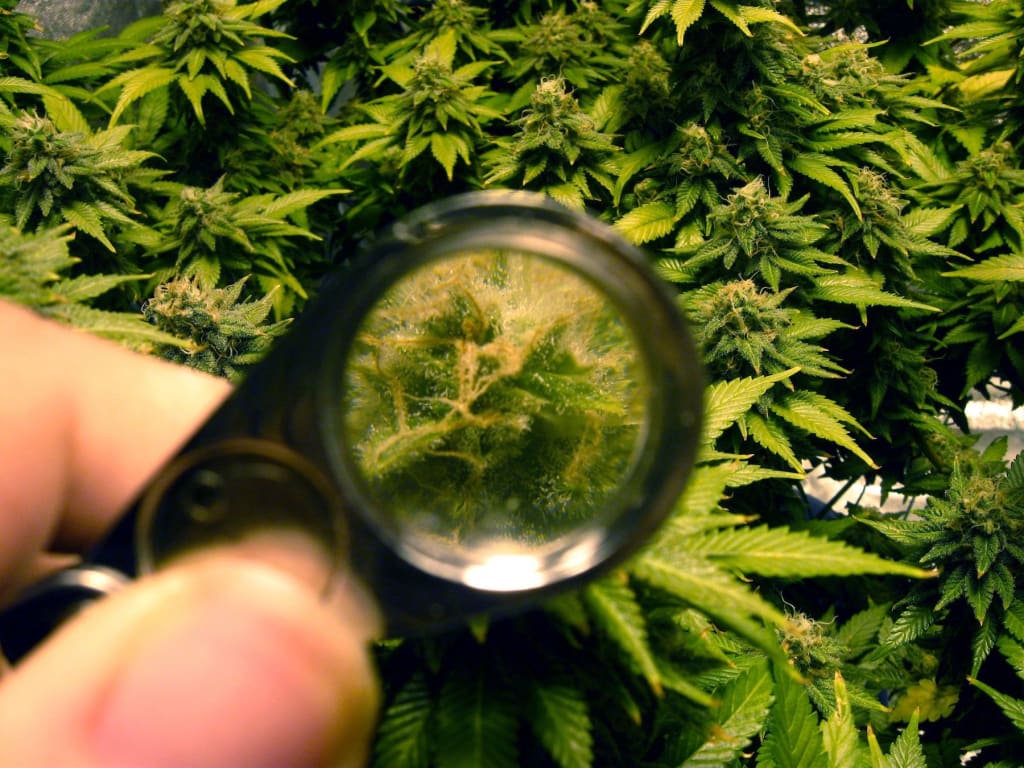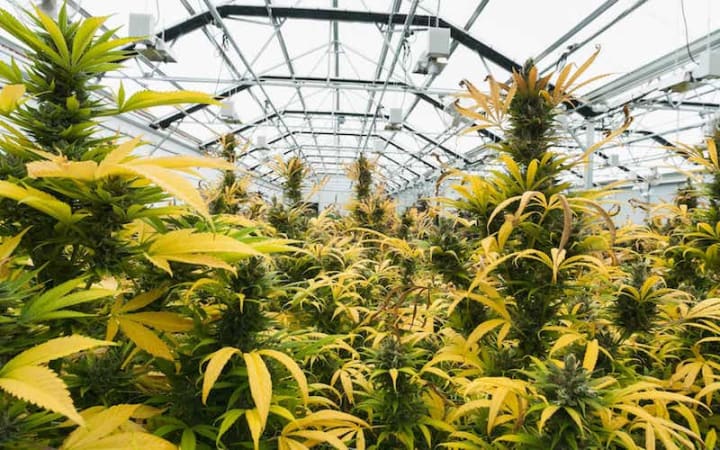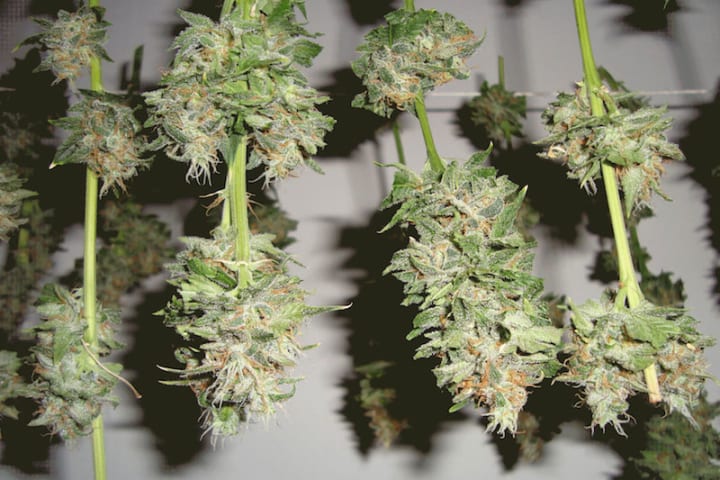When Should You Harvest Cannabis?
It's of utter import, so necessary is this process it can mean the very difference between raising a truly quintessential batch of herb, to one of extremely low qualities; so, when is it best to harvest cannabis?

Great question, and to answer it we'll have to delve down deep into the world of marijuana cultivation, a truly immense and immersive industry with eccentric personality. Understanding the necessity in harvesting at the right point in time is key to growing powerhouse buds with exceptional flavor and highs. However, there are a variety of different ways one can grow marijuana in the first place, specifically in either inside or outdoor crops, but there's also myriads of seed variants, lighting apparatuses, feeding nutrients, and much more that can all in effect avert the entire way growers go about harvesting. It's similar to cooking, in that you can follow your, or someone else's desired route of growing, much like a chef will follow a recipe, but it doesn't always come out to the exact same result. This is why keeping an eye on marijuana growing FAQ pages is key, and attending the other eye to the best advice from industry leaders is even more advantageous in the avoidance of error.
First and foremost, learn the best ways to grow in your particular climate before proceeding. Depending on the season, temperature, and overall lighting, (along with the most important variable: strict maintenance of your buds) marijuana cultivation relies on constant attention and patient responsibility. One of the best ways, for me, in deigning when to begin harvesting is around 14 days after I start the flushing process. This is when growers will flood their plants with nothing but water to make sure they use up their own nutrients, which are stores of harmful compounds, like sugars and starches. These elements are what you want to avoid when harvesting, so make doubly sure, before you think all is said and done, that you have preformed every step with intensive accuracy before even begging to question when is the best time to harvest cannabis...
Preparedness, whether for first-time growers or even experts, is of course the very first thing to ascertaining when you must harvest cannabis. It's probably the easiest step on this list, since all you'll realistically need is a trusty microscope to study each of your plant's pistils and trichomes. For a full list of marijuana growing necessities, check out this Cannabis Growing Guide, which also has a variety of helpful tidbits and necessary insights into the entire world of marijuana farming.
Yes, 420's miniature 60-75 times LED microscope is, for lack of a better term, pretty dope, but there's loads of other neat products to choose from, like magnifiers, digital microscopes, and jewelers loupes, which are tools for reading a plant's potentiality for harvest.
High Patience
What every true stoner should not only be best friends with, but should also just know from their generally chill attitudes, having bountiful degrees of patience in self-cultivating cannabis plants is a desired necessity. Without a clear and concise plan, too, you'll warrant an opening of Pandora's Box in unwanted errors, mistakes, and ultimately may even miss specific timings for important procedures if you're neither careful, nor extremely patient.
If you're not prone to showcasing well-attuned patience, I suggest getting into the habit of either smoking more weed, or simply preparing for a long time of learning, which in all accords is exactly what is most advised when uncovering the best time to harvest cannabis. Mistakes, after all, will lead you on to more beneficial growing well into the future.
Locked and Loaded Pistils
Maintaining an almost obsessively trained eye on your budding crop's various pistils is one of the easiest methods for learning when best to harvest cannabis. Marijuana cultivation is very stringent upon the quality and aspects of your buds' pistils, which are the female organs of the flower.
There's various differences you'll be able to see in pistils, but brownish tints and red shades are what you're mostly looking for. Variant upon the strain, you'll see one of three different brownish hues, ranging from 50-70, 70-90, and finally 90-100 percent clarity. The first, 50-70 percent brown coloration, is typically young, light marijuana, and the higher you go, the heavier, riper and sharper the marijuana will get. It depends on the grower, but the best time for harvesting marijuana plants is at, or around 70-90 percent brownish hues.
Trying Trichomes
It's time to get your magnification tools out, for trichomes are no easy task to spot. These are typically unicellular and glandular outgrowths that protrude from the epidermis of a plant. Much like pistils, trichomes will come in three variations of color: clear, milky white and amber-ish, or all-over amber.
Trichomes are probably the easiest way in deciding when best to harvest cannabis. If you see clear trichomes, then your weed is only just beginning to ripen, so give it a little more time. If the trichomes are covered in amber, then I'm sorry to inform you, but the plants are overripe. At a milky white and somewhat amber color, or simply cloudy trichomes, are those that are signing their preparedness for harvest.
Environmental Whispers

As in all things with life, the environment surrounding any particular aspect in question will, in most cases, tell you exactly what you need to know. It's no different when growing marijuana plants, since they give off a plethora of signs when in need of either specific steps, or simply food. That being said, if you're wondering when to harvest cannabis, just ask the environment. Not literally, of course, but if you're one of those growers who gets into a full fledged relationship with their plants, then by all means, vocally recite your concerns. I doubt the plants will directly answer you, though.
On the other hand, you may smell their response. The air's odor, if your plants are being properly contained, will usually smell extremely potent when needing to be harvested. One piece of expert indoor marijuana growing advice comes into play when you're preparing plants for trimming and harvesting; air circulation. It's the most important aspect of note when choosing where to grow in the first place, since the smells are largely where you'll get the necessary answers for when to take action in any marijuana growing situation.
Purification Leaching
Otherwise and more commonly known as flushing, leaching your marijuana is one of the most important processes in harvesting cannabis. Be careful when feeding marijuana plants, as an unbalanced mix of nutrients can cause "nutrient lockout," or simply a host of deficiency symptoms that oftentimes cannot be corrected. Flushing can be preformed in soil or through hydro systems (which are often costly and too complex for newbies).
Flushing is something you will be performing a lot in order to maintain your plants' overall consistency and life force; utilized when switching nutrients, every 2 weeks or so in diminishing nutrient lockout, and to also combat the former when buds are showing any signs of breakdown. Most importantly, an avid round of flushing must take place before you begin to harvest cannabis, since it ultimately boosts quality and content of the following weed yet to be produced.
Proper Trimming
Make sure you preform this while the plant is still standing, as the process will show to be ten times easier. This is one of the closing processes when it's time to harvest cannabis: haircut styling. Depending on the grower, trimming can vary greatly from technique and timing, but it essentially comes down to how well you want the plants to dry, which can equal better qualities in nearly all categories; from weights and flavoring, to preservation and potency.
With a pair of secateurs or Fiskars, gently cut unwanted leaves from the cannabis plant. It sounds simple, but growers are prone to either injuring themselves or even the buds if improperly practiced, so be sure to act with utmost caution. For a better drying procedure, remove leaves in sections rather than doing the entire plant; in effect ensuring branch and kola are done separately and don't touch when hung to dry.
Humidifying Drying

What is the best way to dry cannabis? Enter the "dry room," which is much like the red room designed for photographers, in that this is where you'll be literally drying your marijuana buds to budding perfection. In order to harvest cannabis correctly, you must ensure weed is dried through and through following a proper trimming, since the plants are technically still alive with water in their system.
This requires a consistent and slow procedure of literally humidifying, or oxidizing your marijuana plants by hanging them upside down with strings. This should take anywhere from five days to a full week in a room that's designed specially for good airflow and temperature control (which should be an average 70 degrees Fahrenheit at 50 percent humidity). Make the process even simpler and quicker by purchasing a drying cabinet. Meticulous as the process sounds, it's my favorite step in growing cannabis, because you can finally try out your own sample.
Curing Your Buds
Your cannabis plant will also need a lengthy time to be cured—though, not from anything like syphilis or depression, but from drying too much and losing valuable rates of THC potency. As so often is the case, strains may vary on curing rates and storage can also have a direct effect on the overall potency your bud displays. Take this slow and seriously, as harvesting cannabis the right way depends upon this last and final step, which many tend to ignore.
Once they're dry, place buds in a separate container, such as bags or plastic tubes (the most resourceful I've found is glass, of course). To cure your buds, giving them some avid breathing time is of utmost importance; opening their jars for 15 minutes, or so, each day to circulate and then exchange air for the removal of any remaining moisture is key for finishing the harvest with delectable marijuana outputs.
Flowering Times
The time to harvest can best be extracted by way of knowing particular flowering times inherent in your strain. Indica and sativa both generally act as opposites, but that doesn't mean you have to follow their specified times to a T. These are simply guided walkthroughs in what to expect when growing various strains of marijuana.
The flowering phase for indica is usually stipulated by eight weeks, meaning they should be ready to harvest after those 2 months are up. Sativa, on the other hand, takes a bit longer as flowering takes about 10 weeks, which is followed by their own harvesting. Every grower sees this differently though, so either harvest earlier, or later it honestly comes down to your preference alone.
Cultivated Preferences
The fun, and maybe more annoying aspect upheld by weed growing is that is's open to vast canals of relatively unlimited opinion. Like baking or investing, growing cannabis is a highly personal experience that rests entirely on your own shoulders. While I may have given you an extremely long diatribe of variant resources on the process and timing to harvest cannabis correctly, the answer relies upon what you alone feel is most correct.
It's why so may people, in hindsight, prefer growing over other methods in attaining weed; it's open to interpretation and can be, although precarious, an experience of learning, from gaining a first person perspective of the industry, to acquiring plenty of interesting theories on quality cannabis cultivation. As such, only you can decide when best to harvest, so do make sure it's the right time, and if it's not, you always can try again using an entirely different method in timing your cannabis harvest.
About the Creator
Hydro Wilson
Of Alpha Kappa Nu fame. Grew up in Boulder, Colorado. Addicted to Halo.






Comments
There are no comments for this story
Be the first to respond and start the conversation.